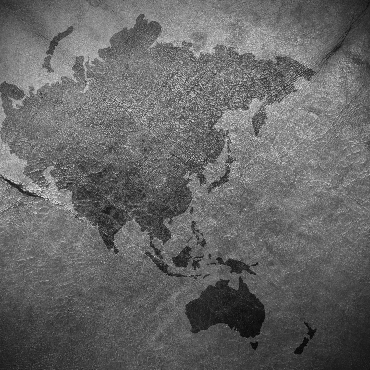CHINA'S FORMIDABLE FLEET
A July 2020 investigation by NBC News has cast a spotlight on China's expanding fishing fleet, which includes an armada of industrial boats that are illegally fishing off of the coast of North Korea. Flouting UN-imposed sanctions, the presence of these vessels has all but wiped out the livelihood of local fishermen and decimated squid stocks in the area by as much as 70%. The fleet, which is subsidized by the Chinese government and numbers between 200,000-800,000 boats, is said to utilize government-supplied data pulled from satellites and research vessels to pinpoint the most lucrative squid stocks.
Compounding the problem is the fact that Chinese commercial fisherman often work as what experts have termed a “de-facto paramilitary” force. “These vessels are routinely cast by Western military analysts as a vanguard 'civilian militia'" - one which functions as "a nonuniformed, unprofessional force without proper training and outside of the frameworks of international maritime law, the military rules of engagement, or the multilateral mechanisms set up to prevent unsafe incidents at sea," a 2019 Foreign Policy article outlined. Whether in the South China Sea or off the coast of West Africa, incursions by Chinese fishing ships are becoming more frequent, bold and aggressive, raising the potential for some sort of military confrontation. (Yale 360, August 17, 2020; War on the Rocks, August 17, 2020)
CLIMATE AND GLOBAL LABOR
The McKinsey Global Institute, the business and economic research arm of global consulting firm McKinsey & Co., released a report in August indicating that Southeast Asia may be disproportionately affected by climate change. Flooding, drought and rising temperatures are predicted to lead to fewer effective working hours and by 2050, researchers estimate $2.8- $4.7 trillion (8% - 13%) of Asia's GDP will be at risk annually. "Asian countries with lower levels of per capita GDP would be at most risk and the poor will be hit hardest... That's because they are more exposed to extreme climates than the wealthy, relying more on outdoor work and natural capital, and may have fewer financial means to adapt," the report stated. The forecast was not all gloom and doom, however; given the continual development of urban areas and infrastructure across Asia, the report notes, the region has the potential to mitigate some of these effects by reducing emissions, adapting infrastructure plans and taking other steps to proactively address the effects of extreme climate changes. (McKinsey Global Institute, August 12, 2020; CNBC, August 16, 2020)
NORTH KOREA'S NUCLEAR VULNERABILITY...
After reviewing commercial satellite imagery from August 6-11, analysts at 38 North, a website that monitors North Korea, were alarmed by the apparent vulnerability of the reactor cooling systems at the Yongbyon Nuclear Scientific Research Center to extreme weather. The DPRK's five megawatt reactor sits on the bank of the often-flooded Kuryong River, just 60 miles north of Pyongyang, and the site is home to nuclear reactors, fuel reprocessing plants and uranium enrichment facilities. This year. the Korean Peninsula was hit with one of the longest rainy spells in recent history, with floods and landslides causing damage and deaths on both sides of the DMZ. Such extreme weather could in the future impact the functioning of Yongbyon, the report noted, with potentially severe consequences. (Reuters, August 12, 2020)
...AND OURS
Nor are U.S. nuclear reactors immune to the threats posed by climate change. According to a recent analysis by Moody's Investors Service, "[th]e consequences of climate change can affect every aspect of nuclear plant operations — from fuel handling and power and steam generation to maintenance, safety systems and waste processing." Using data collected from the Moody's affiliate that provides climate risk intelligence to examine threats to operating nuclear plants, known as Four Twenty Seven, the report warns that "intensified flood risks and heightened water stress will threaten 57 U.S. nuclear plants over the next 20 years."
Data shows 37 gigawatts of U.S. nuclear capacity is overly exposed to flood risk, with facilities located on the East and Gulf coasts at higher risk due to rising sea levels and harsher hurricane seasons. Meanwhile, facilities in the Midwest and southern Florida are facing rising temperatures which may hinder the ability of plants to deliver power. (Moodys.com, August 19, 2020; Scientific American, August 20, 2020)
Want these sent to your inbox?
Subscribe



